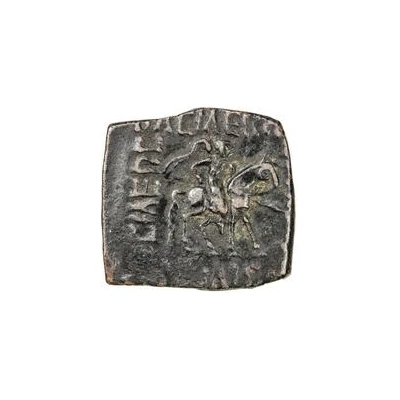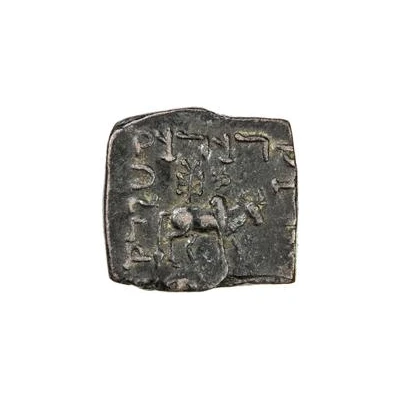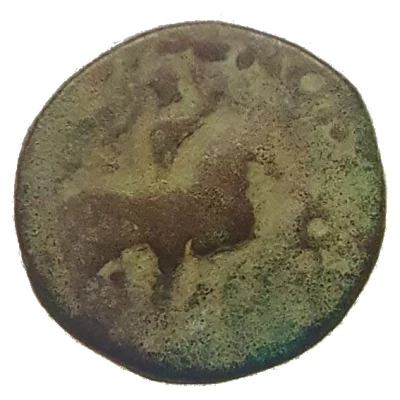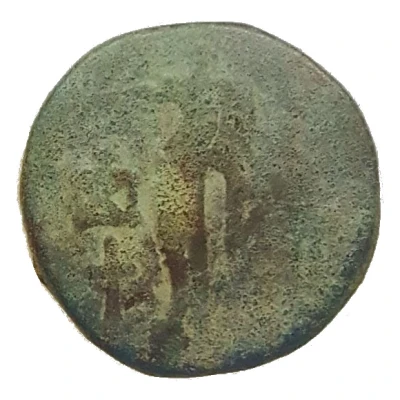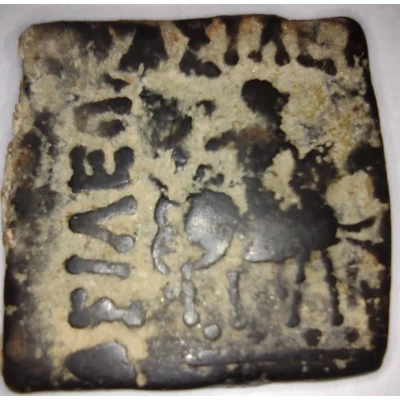
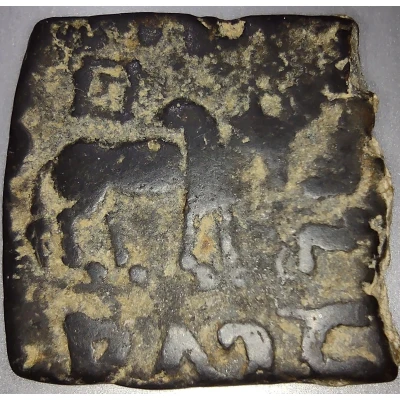

Pentachalkon - Azes II Pushkalavati 35 BC - 12 BC
| Copper | 9.27 g | - |
| Issuer | Indo-Scythian Kingdom |
|---|---|
| King | Azes II ("Aζης) (35 BC - 12 BC) |
| Type | Standard circulation coin |
| Years | 35 BC - 12 BC |
| Value | Pentachalkon (5⁄48) |
| Currency | Drachm (200 BC to 400 AC) |
| Composition | Copper |
| Weight | 9.27 g |
| Size | 24 × 22 mm |
| Thickness | 2.5 mm |
| Shape | Rectangular |
| Orientation | Coin alignment ↑↓ |
| Demonetized | Yes |
| Updated | 2024-10-10 |
| Numista | N#399254 |
|---|---|
| Rarity index | 95% |
Reverse
Bull R, MAHARAJASA RAJADIRAJASA MAHATASA AYASA, monogram 37 above, Karosthi Dhra before
Comment
According to Mitchiner the dates of Azes I were 57-c. 35 BC, the same dates he assigns to Azilises. Mitchiner’s dates for Azes II are c. 35 BC-5 AD. Senior points out that year 1 of the reign of Azes marks the start of the Vikrama Samvat era of dating, still in use in Nepal. Year 1 was 58 BC, Senior asserts that Azes died c. 20 BC. Mitchiner gives Azes I the horseman with spear types, and Azes II gets the horseman with whip types. Senior says there was a transition period when both were made. The whip coins started out slightly debased, and debasement continued through the posthumous issues.
The Scythians were horse nomads famous for their cruelty and for riding around naked in the winter. They were active for about 500 years from Eastern Europe to India. We are using two catalogue references: Oriental Coins and Their Values, Ancient and Classical World, by Michael Mitchiner, and Indo-Scythian Coins and History, by R.C. Senior. The two authors have created two rather different histories of the Indo-Scythians. In most cases I use Senior before Mitchiner in my descriptions, except for mints. Mitchiner liked to assign mints to the various marks they used on their coins. Senior made suggestions rather than definitive statements. So any indication of mint in my descriptions is apt to be Mitchiner.
The earliest ancient Indian coins were the “bent bar” punchmarked silvers of the Achaemenid Persians occupying Gandhara in northwest Pakistan. By the 3rd century BC coins were in general use in most of India and Ceylon, and in subsequent centuries struck round coins in gold, silver, and copper came into use throughout the subcontinent and beyond to Southeast Asia and Pacific islands to Java and beyond.
https://www.goldenruleenterprises.org/product/scythian-azes-c-58-20-bc-pentachalkon/
Interesting fact
One interesting fact about the Pentachalkon - Azes II (Pushkalavati) coin is that it features a unique blend of Greek and Indian influences in its design. The coin's obverse side features a portrait of Azes II, while the reverse side depicts a scene of the goddess Artemis hunting, which is a common motif in Greek coinage. However, the coin's design also incorporates Indian elements, such as the use of the Brahmi script to write the legend "Azes II, King of the Indo-Scythians" in the coin's margin. This fusion of cultural influences reflects the Indo-Scythian Kingdom's position as a crossroads of trade and cultural exchange between the East and the West.
